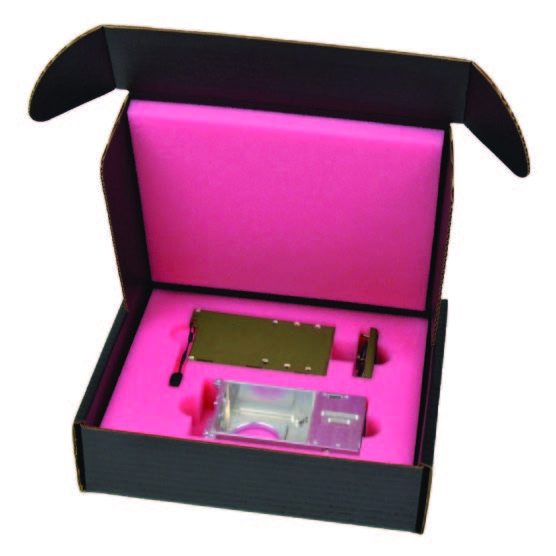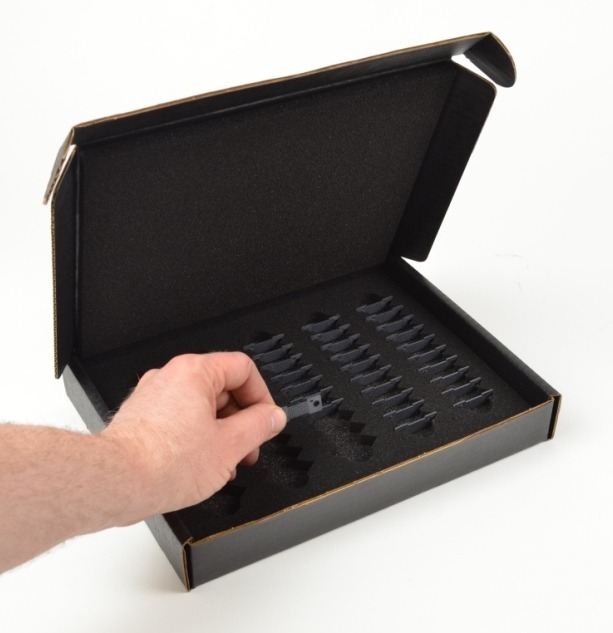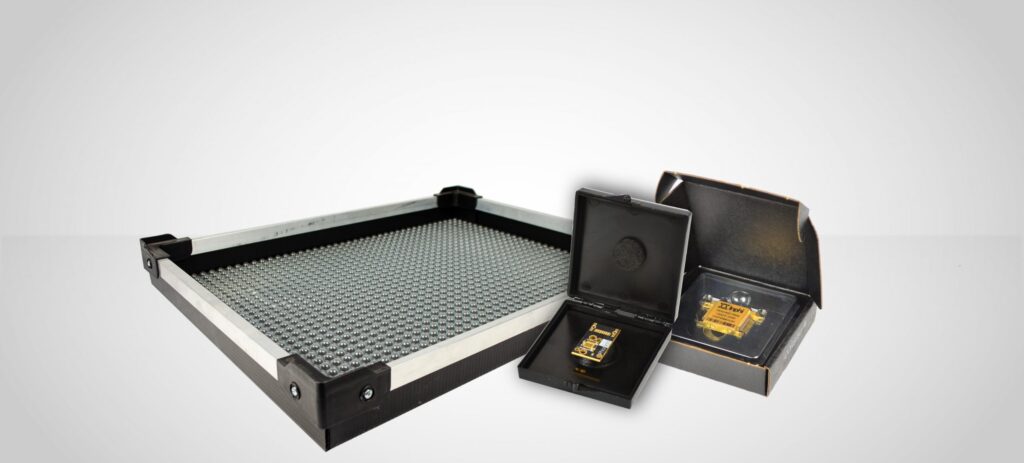A GUIDE TO CORRECT USE OF ANTISTATIC FOAMS
History
Pink ESD foam has been a standard in the world of ESD packaging since its creation in the 70’s. It is a great product that solves many requirements in many situations. Generally used as padding for a package or work surface, pink foam has been a “solution” for many ills. That said, there is confusion about the ant-static nature of the foam and how long it lasts. Pink anti-static foams have a shelf life. Once that shelf life has expired, pink foam can be very dangerous to the manufacturing environment and sensitive components. When inspecting an EPA (ESD Protected Area), the most common infraction of standard ESD practices is the misuse of these foams.
As it relates to ANSI/ESD S20.20, ANSI/ESD S541 tells us in 6.1 and 6.2 that packaging (in this case pink foam) used both inside and outside an EPA must meet certain characteristics.
6.1 Inside an EPA
Packaging used within an EPA (that satisfies the minimum requirements of ANSI/ESD S20.20) shall be:
- Low charge generation.
- Dissipative or conductive materials for intimate contact.
- Items sensitive to < 100 volts human body model may need additional protection depending on application and program plan requirements.
6.2 Outside an EPA
Transportation of sensitive products outside of an EPA shall require packaging that provides:
- Low charge generation.
- Dissipative or conductive materials for intimate contact.
- A structure that provides electrostatic discharge shielding.

Low charge generation is one of these characteristics of the materials. It also states that for "intimate" or immediate contact of sensitive products, the packaging shall be dissipative or conductive. For most applications, the thing making "intimate contact" is foam. This is why it's so important to understand what makes Pink ESD foam static dissipative and why it has a shelf life. After the shelf life has been exceeded, all you have is regular foam. Tp better understand the “shelf life,” we first need to look at regular foam in general, ESD foam, and appropriate applications of it.
Foam Is Great For Cushioning
As a substrate, regular foam offers wonderful cushioning to protect products from physical damage. The concern with regular foam is that it's very high on the triboelectric scale and can produce a static charge. All materials, even conductors, can be tribo-electrically charged. How much charge is affected by type of material, speed of contact and separation, relative humidity and several other factors. Therefore, regular (non ESD) foam is unacceptable in an EPA (ESD Protected Area) environment. Remember, after the ESD properties expire from the Pink ESD Foam, you just have regular foam left.
Pink Anti Static Foam
Because of its high surface area and chemical composition, flexible foam is subject to the acumulation of static charges. This characteristic is addressed by adding anti-static chemical additives or anti-static surfactants. These additives are typically added to the foam during manufacture. The pink color is just the color the industry chose to help identify the foam belonging to “ESD” or “Antistatic” materials.
The surfactants used are low molecular weight fatty acids typically developed from amides or amines. Surfactants are mobile (blooming) surface modifiers temporarily changing the friction properties between mating surfaces (tribo charging). This is a pretty big statement. Now, let's take a look for a better understanding. The surfactant molecules in their initial state are unsaturated.
The unsaturated bonds in these molecules want to absorb moisture. In this unsaturated state, they help lower the coefficient of friction of the foam helping its Antistatic properties. The downside of unsaturated molecules is they are made to become saturated. Once the molecule is saturated, the game is up and their antistatic properties are no longer present. How much time does it take for these molecules to become saturated? That depends on a few factors. Humidity and the environment play vital roles.
How the foam is handled also plays a vital role. The truth is, there is little actual guideline for how long it takes to saturate. Most experts in the industry determine one year as the critical date to begin testing while others suggest earlier and some later. It boils down to your understanding and your procedures. What works for some will not always work for others.
Shelf Life
Now we know why foam has a shelf life. Once foam's shelf life has expired, foam will not appear to be any different, but the foam's ESD protective properties will be gone. We also know that, based on many factors, shelf life can be short or long. So what do we do?
Luckily, the ESD Association gives us guidelines to help handle this problem. As it relates to ANSI/ESD S20.20, ANSI/ESD S541 tells us in 6.1 and 6.2 that packaging (in this case pink foam) used both inside and outside an EPA must have certain characteristics. One of those characteristics is that materials must be low charge generating. It also states that for intimate contact of sensitive products, it must be dissipative or conductive.
Foam is generally used for intimate contact of sensitive products. You see foam lining racks and shelves, in bottom of drawers, in totes and as separators between stacks of circuit boards or assemblies. This is pretty self-explanatory. We can't have any charge generating packaging material in an EPA or in certain circumstances outside of an EPA.
But now we have an issue. We've outlined and explained why these foams might or might not be static safe. If the foam still meets its material specifications, we’re all good to go. If the properties of pink foam are gone, what can you do? Luckily for us, we can turn again to the ESD Association for guidance. More specifically, ANSI/ESD S541. In section A.6:
The static control properties of some packaging materials can deteriorate with time and use. Compliance Verification of static control packaging properties should be part of the ESD control compliance verification plan.
A6 Compliance Verification
This is a vital statement. It both validates that material will degrade over time, it also tells us that we must develop a verification process to ensure the properties are still present. Another reference to validate this is ESD TR53-01-06. ESD TR53-01-06 discusses compliance verification of ESD protective equipment and materials.


Package Compliance Verification
Regularly verify packaging materials as recommended in ANSI/ESD S541 (Packaging Materials for ESD Sensitive Items). Because of the big variety of materials used in packaging, users should come up with their own packaging compliance verification plan.
FOD (Foreign Object Debris)
One final consideration when using foam for intimate contact with electronics is concerns of FOD – foreign object debris. All foams, standard non-ESD foams, antistatic foams, and conductive foams will shed particulates to varying degrees. Some are much better than others, but foams will produce some FOD. If you are concerned about FOD when handling devices, use alternate options to avoid contact with foam.
Summary
So we've done it. We have learned that you may have a problem if you are using Pink ESD Foam.
- Pink ESD Foam has a shelf life
- The shelf life of that foam is variable
- When it loses its ESD properties, it's unacceptable in, and potentially out, of an EPA
- If you are using Pink ESD Foam, it should be a short term solution
- Consider the potential FOD issues with foam
- Have a quality program in place if you are going to use foam long term
Thanks to the ESD Association, there's a potential solution to the problem of limited shelf life. Compliance verification can make an antistatic foam viable. Without compliance verification, or if it's not practical, then other more permanent options should be considered.
